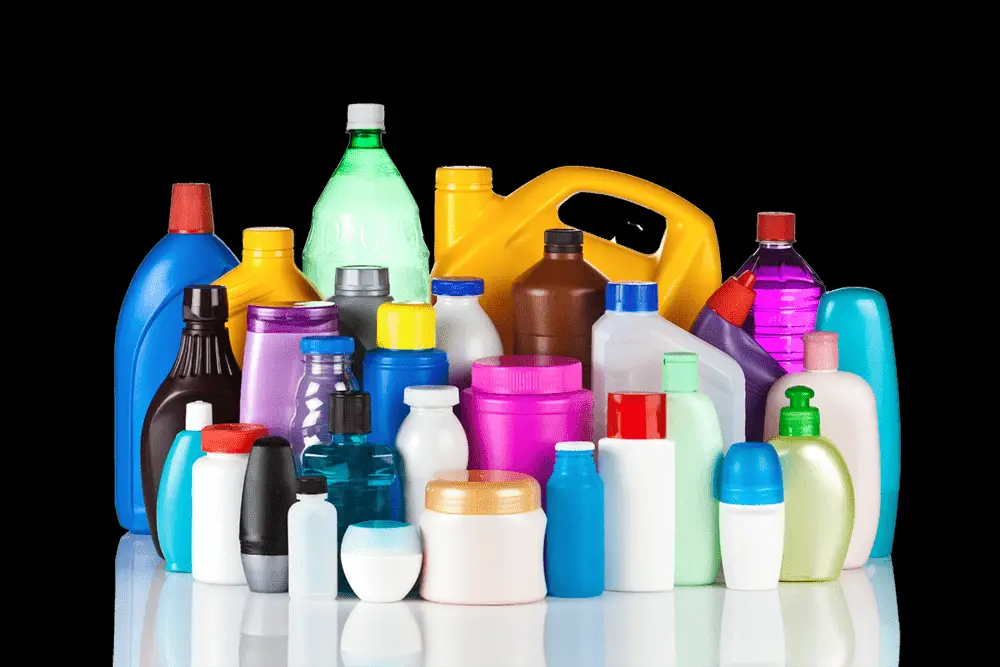What are Plastics?
Plastics is the term typically used to describe a vast array of synthetic or semi-synthetic materials that are utilized in an ever-expanding number of applications.
You can Read More Chemistry Articles.
Introduction To Plastics
Plastic has become an indispensable component of our lives. The annual consumption of plastics has been rising significantly. Its low density, strength, user-friendly designs, fabrication capabilities, extended life, low weight, and low cost have contributed to its meteoric expansion.

Plastic garbage is very apparent due to its significant contribution to the total volume of solid waste. Due to their high visibility, plastic waste has been deemed a significant solid waste problem.
Advantages of Plastics
Plastic’s increasing use is attributable to its advantageous qualities, which include:
- Extreme adaptability and adaptability to specific technical requirements.
- Transporting lighter materials than competitive materials decreases fuel usage.
- Excellent safety and sanitary characteristics for food packaging.
- Longevity and durability
- Chemical, liquid, and impact resistance
- Outstanding thermal and electrical insulating qualities
- Comparatively lower manufacturing costs
- Unique capacity to combine with different substances, including aluminum foil, paper, and glue.
- Superior in terms of aesthetic appeal.
- The material of choice – the human lifestyle is inseparable from plastic.
- Intelligent characteristics, intelligent materials, and intelligent systems.
Disadvantages of Plastics
As stabilizers or coloring agents, potentially hazardous compounds are used in the creation of plastics. Numerous of these have not been subjected to an environmental risk assessment, and their effects on human health and the environment are still unknown.
For instance, phthalates are utilized in the production of PVC. In the past, PVC has been utilized in children’s toys, and there have been concerns that phthalates may be released when these toys are sucked. Currently, a risk evaluation of the environmental consequences of phthalates is being carried out. The disposal of plastics also greatly contributes to their environmental impact.
The majority of plastics are non-degradable and may take a long time to break down in landfills. As more plastic products, particularly plastic packaging, are discarded shortly after purchase, the amount of landfill space required by plastic garbage is becoming a significant concern.
Frequently Asked Questions – FAQs
Q.1 What are the benefits and drawbacks of plastic use?
The production criteria for plastics include durable, inexpensive, water-resistant, less energy and chemical-intensive, and lightweight. Plastics contaminate our environment, which is a drawback of their use. They are hazardous to wildlife.
Q.2 What are the advantages of plastic?
The qualities of plastic are corrosion resistance and chemical inertness. They have a low thermal expansion coefficient and excellent thermal and electrical insulating qualities. Plastic advantages offer excellent water resistance and adhesion. Plastic production is robust, high-quality, and inexpensive.
Q.3 What are the negative effects of plastic?
Toxic chemicals seep from plastic and are essentially present in every individual’s blood and tissue. Their exposure is associated with cancers, birth abnormalities, reduced immunity, endocrine disruption, and other illnesses.
Q.4 What are the primary disadvantages of plastic?
Plastics act like a sponge, absorbing numerous hazardous chemicals and contaminants carried by the water. When we decompose, we release these into the atmosphere, along with the chemicals employed to give them their features, such as color, which can be exceedingly harmful.
Q.5 How plastic is harmful to humans?
The human body absorbs the chemicals added to plastics. Any of these drugs have been found to alter hormones or have other possible health consequences. Plastic garbage, which is often tainted with chemicals and sometimes consumed by marine animals, can injure or kill wildlife.
Q.6 How does plastic benefit the economy?
Plastic offers numerous immediate economic benefits and can aid in resource efficiency. It reduces food waste by increasing shelf life, and its relatively low weight reduces fuel use for transporting items. Estimates indicate that by 2050, the ocean will contain more plastic than fish.
Q.7 What is the impact of plastic?
Humans, animals, and plants are harmed by toxic chemicals that are caused by plastic contamination. Plastic decomposition can take hundreds or even thousands of years, resulting in long-lasting environmental impacts. It impacts all organisms in the food chain, from microscopic animals such as plankton to whales.
Q.8 Is plastic harmful?
Toxic chemicals seep from plastic and can be found in the blood and tissues of nearly everyone. Cancer, birth abnormalities, weakened immunity, endocrine disruption, and other illnesses are linked to their exposure.
Image Source : Google

